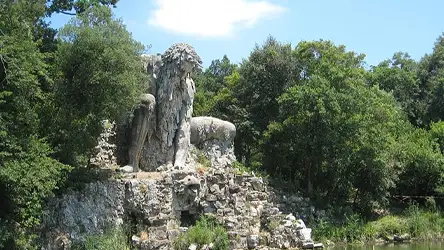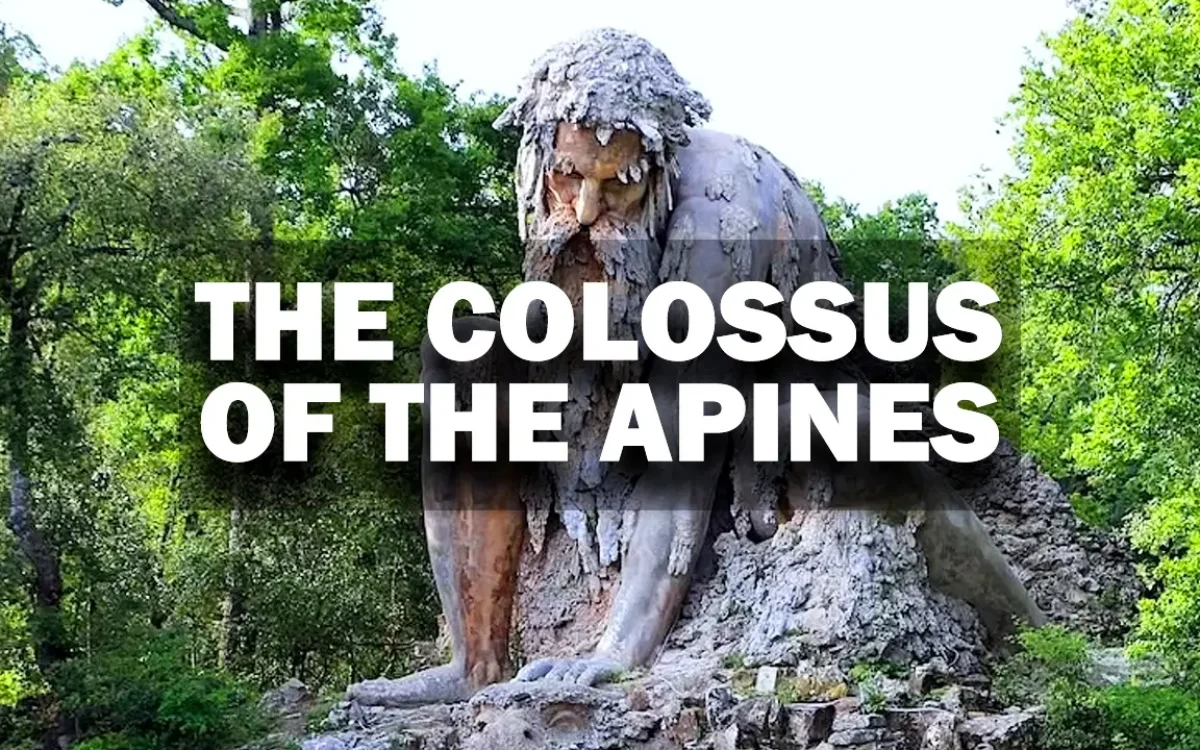In the idyllic landscapes of Italian Tuscany, very close to the city of Florence, a Renaissance treasure is hidden: the Apennine Colossus.
The Origin of the Colossus: A Work Commissioned by the Medici
Located in the gardens of Villa Demidoff, this monumental sculpture is a masterpiece of the sculptor Giambologna, which captivates those who have the privilege of contemplating it.
The Apennine Colossus is not simply a sculpture; It is a testament to the artistic patronage of the Medici, one of the most influential families of the Italian Renaissance.
Commissioned by Francis I de’ Medici, the Grand Duke of Tuscany, this imposing figure was conceived to adorn the lush gardens of the Villa of Pratolino, property of the Medici family.
Giambologna: The Master behind the Work

The talent behind the Colossus of the Apennines is the renowned sculptor Giambologna, whose real name was Jean Boulogne.
Born in Flanders, Giambologna settled in Florence as a sculptor to the Medici court, where he achieved fame and recognition for his ability to create masterpieces inspired by mythology and mannerism.
The Majesty of the Colossus: An Impressive Sculpture
The Apennine Colossus is an impressive sculpture ten and a half meters high, sculpted in stone and brick.
It represents a titan emerging from the earth, half man and half mountain, in a pose that evokes the strength and majesty of the Apennines, the mountain range that runs through Italy.
Surprising Details: The Interior of the Colossus

But what really surprises about the Colossus of the Apennines is its interior. Although today some of its features have disappeared, such as the visitable caves and water features, you can still see fascinating details.
From rooms with different uses to ingenious mechanisms, such as a fountain that pours water into the pond through the fish’s mouth and a chimney in the head that used to emit smoke, the interior of the Colossus is a testament to Giambologna’s ingenuity and his ability to integrate art and functionality.
The Historical and Cultural Relevance of the Colossus
In addition to its artistic value, the Apennine Colossus has great historical and cultural relevance. As part of the Medici legacy, this sculpture represents the artistic patronage that flourished during the Renaissance in Italy.
Furthermore, its location in the gardens of Villa Demidoff is a reminder of the beauty and grandeur of nature, as well as the power of art to merge with its surroundings.
Preserving the Legacy of the Renaissance

Despite the centuries that have passed since its creation, the Apennine Colossus remains one of the jewels of the Italian Renaissance.
Although the passage of time has left its mark on the sculpture, its beauty and meaning endure, reminding us of the importance of preserving and valuing our cultural heritage.
A Must Visit in Florence
The Apennine Colossus is much more than a simple sculpture; It is a symbol of the Italian Renaissance and a testament to Giambologna’s talent and vision. Located in the stunning gardens of Villa Demidoff, this monumental work of art deserves to be admired and appreciated by future generations.
- You may also like:
- YouTube Channel: Travel Destinations Now






